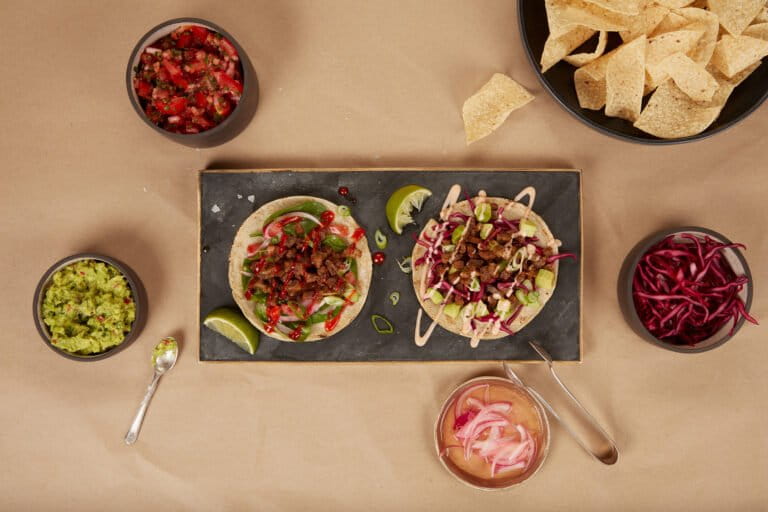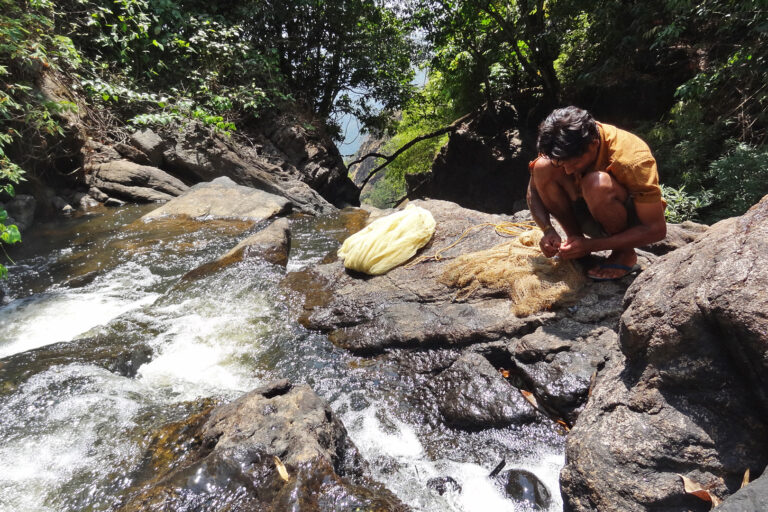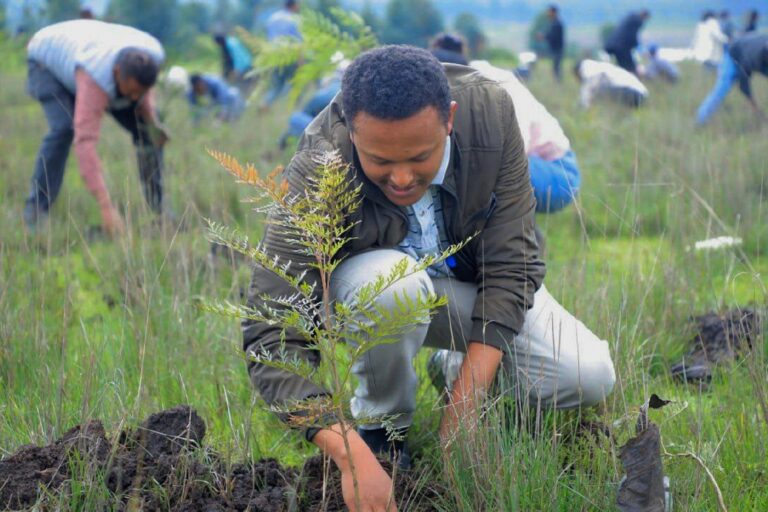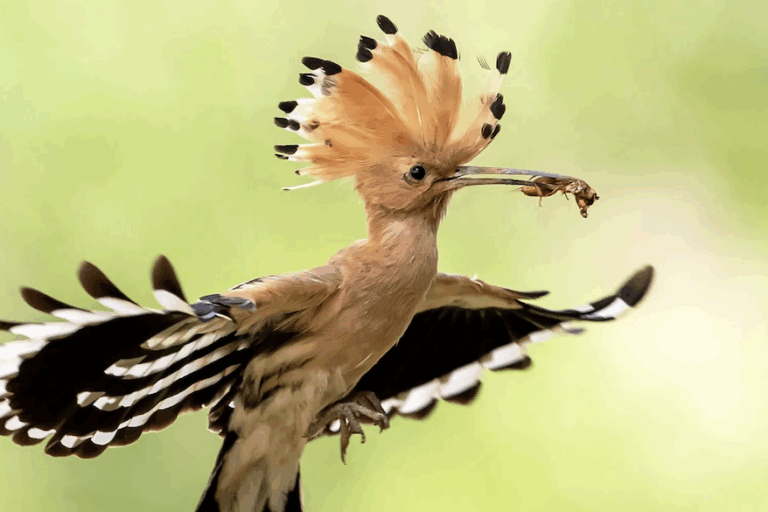Big Farms Can Make the Leap to Organic Farming, Study Suggests
Big Farms Can Make the Leap to Organic Farming, Study Suggests
Erin Digitale, special to mongabay.com
June 4, 2008
Large fruit and vegetable growers can adopt the methods of small-scale organic farms while maintaining crop yields, keeping pests in check, and improving the health of their soil, researchers report in the July 2008 issue of Agriculture, Ecosystems and Environment.
As organic produce sales sprout up, more farmers want a piece of the pesticide-free action. To obtain organic certification, farms must use exclusively organic techniques for three years. The transition to organic cultivation is daunting: In that three-year period, growers shoulder the risks of new farming methods, but can’t benefit from the market premium garnered by certified organic produce. The shift is especially tricky for large farms, since most organic techniques were devised with small farms in mind.
But melding organic techniques with ideas from big-farm management helped one grower navigate the jump, the new study says. This success could point the way toward cheaper, more widely available organic produce, and away from environmentally damaging fertilizers and pesticides.
“We have spent 50 years researching chemical-based agriculture,” said study author Sean Smukler, a doctoral student in the department of Land, Air, and Water Resources at the University of California, Davis. “Yields are way up.” But there’s no reason to believe organic techniques are inherently inferior, he added. “We just haven’t done the research.”
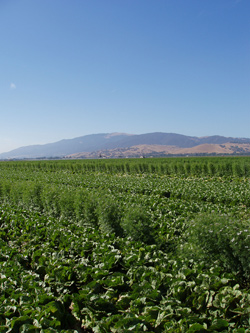
Organic romaine lettuce planted with “insectary” strips of cilantro. The cilantro attracts beneficial insects to the field. Photo: Sean Smukler. |
Smukler and his colleagues are tackling that research deficit. Between 2000 and 2003, they worked with a large vegetable grower in California’s Salinas Valley to convert 215 acres to organic operations. The scientists tracked the farmers’ efforts to tailor traditional organic methods to a large farm.
Organic farms typically use small, intensively managed plots to keep pests in check and yields up, Smukler explained. Conventional farms, in contrast, usually plant one crop over a big area.
Big organic operations have to find the middle ground.
“The tradeoff is having [plots] small enough that they’re not destroyed by insects and disease, but big enough to manage efficiently,” Smukler said. “That’s a trick.”
At the start of their organic venture, the farmers planted many small plots with a wide variety of vegetables, including broccoli, celery, fennel, and several kinds of salad greens and herbs, all suited to the Salinas Valley’s cool Mediterranean climate. Over time, they figured out which vegetables did best, dropped less-successful varieties from their repertoire, and planted medium-sized plots of the top crops.
The farmers also balanced conventional and organic approaches to fertilization and pest control, Smukler said. Conventional techniques call for factory-made potions, while organic farmers usually stick to local materials — their own compost, for instance. In the study, the farmers boosted the fertilizing power of local manure and compost with factory-made organic fish fertilizer. They also planted off-season cover crops that got plowed back into the soil.
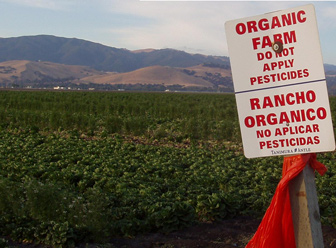
The study was conducted on a working organic farm in California’s Salinas Valley. Photo: Sean Smukler |
These techniques improved two important indicators of soil health. After three years of organic farming, the soil had more microorganisms, a change thought to help crops use nutrients more efficiently. The microbes turn over soil nutrients quickly, increasing the chance that nutrients will be available when plants need them, Smukler said. “Microbes are driving the process.”
As the study progressed, crops also had more mycorrhizae on their roots. Mycorrhizae are fungus colonies that set up symbiotic relationships with their host plants, supplying the crops with growth-boosting nitrogen and zinc in exchange for sugar.
The farmers struggled with organic pesticide sprays. “They’d have these insect outbreaks, and go out and spray, but the organic materials just don’t do it,” Smukler said. Eventually, instead of trying to clobber established outbreaks with sprays, as they did in the pre-organic days, the farmers grew strips of “insectary” plants near their crops to harbor friendly bugs that help control pests. They rotated crops to discourage infestations, and old-fashioned hoeing by hand took care of most weeds.
Crop yields improved over the three-year study, but the study did not directly compare conventional and organic yields, Smukler said. However, he’s enthusiastic about the potential of organic methods to grow enough food to feed the whole world. Claims that organic farming is inefficient are a red herring, he says.
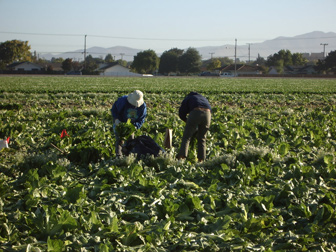 UC Davis researchers harvest lettuce from an organic field for biomass and nutrient analysis. Photo: Sean Smukler. |
“Synthetic fertilizers cost a lot of money and a lot of energy,” he said. “The people that are starving? It’s because they can’t afford synthetic fertilizers. If you figured out a way to better manage farms organically, with materials people actually have — manure, cover crops — that could make a dent in world food crisis, which is upon us.”
Some research already shows organic yields equaling conventional ones, said Andrea Samulon, who works on agribusiness campaigns for the environmental and human-rights organization Rainforest Action Network. “There’s disinformation that organic, sustainable production yields less, and will not be as economically viable as conventional produce,” she said.
Samulon would like to see farm subsidies aimed at helping farmers go organic. “It’s like jumping into a great black hole,” she said to explain farmers’ view of the transition to organic operations. “They may face a decrease in production for a couple of years, and there’s not a lot of government help to make that leap.”
As rising oil prices increase the cost of synthetic pesticides and fertilizers, more farmers will need “minimum-input” organic techniques to survive, Smukler predicts. “Sustainable agriculture means way more than just environment and financial results,” he said. “It’s the social result as well.”
Erin Digitale is a graduate student in the Science Communication Program at the University of California, Santa Cruz.







